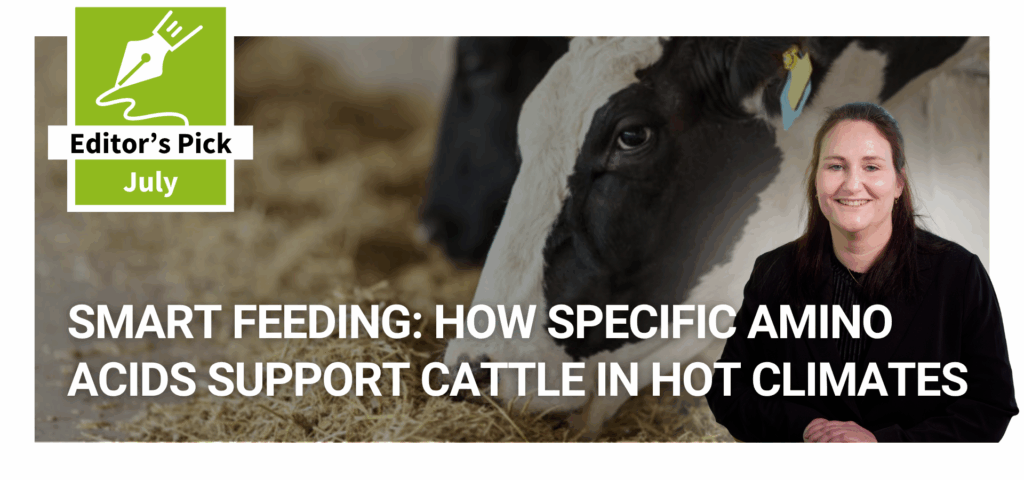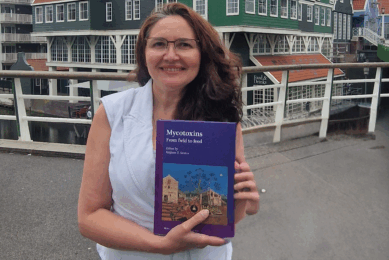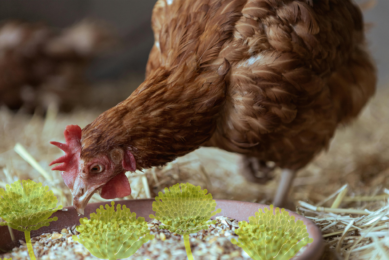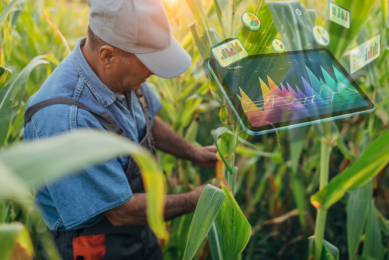Navigate the maze of mycotoxin risk holistically

Mycotoxins are hazardous compounds produced by moulds and are present globally in raw materials and animal feed. Since domestic animals are highly susceptible to mycotoxins, it is crucial to adopt a holistic strategy to mitigate their harmful effects. By understanding when and how mycotoxins are produced and establishing a control plan for farms and feed mills, their impact can be reduced significantly.
MYCOTOXINS 2025: Utilising technology to detect & mitigate – read all articles
Mycotoxins are secondary metabolites produced by moulds, often due to stress factors such as fluctuations in temperature and pH. Moulds that produce mycotoxins are divided into 2 categories: field moulds (e.g., Fusarium species) and storage moulds (e.g., Aspergillus and Penicillium species). Mycotoxin contamination varies depending on the type of raw material and geographical location. For example, corn is more prone to contamination than wheat. Additionally, deoxynivalenol (DON) contamination is more common in the Northern hemisphere, while fumonisins are prevalent in the Southern hemisphere. Variations in grain variety, cultivation methods, and harvest location also impact the risk of mycotoxin contamination, making their levels unpredictable. All these factors affect mycotoxin production and make the presence and level of the mycotoxins extremely variable
Mycotoxicosis and in vivo trials
Mycotoxicosis refers to the harmful effects of mycotoxins on animals, which can manifest acutely or subacutely depending on the severity of exposure. Acute mycotoxicosis occurs when animals are exposed to high levels of mycotoxins over a short period of time, while subacute mycotoxicosis results from prolonged exposure to low levels of mycotoxins. Although subacute mycotoxicosis does not typically show clinical symptoms, it impairs animal growth, reproduction, and overall farm profitability.
Mycotoxin risk control on farms
Controlling mycotoxins at the farm level involves monitoring forages and home-grown cereals. Often, mycotoxin concerns arise when animals display symptoms or exhibit poor performance. To help farmers determine whether mycotoxins are part of the cause, the Myco’Evaluator online tool calculates the probability of having significant mycotoxin contamination based on risk factors like agricultural practices, storage conditions, and animal disorders. This tool provides a starting point for mycotoxin diagnosis, followed by chemical analysis, which remains the most effective method for confirming contamination (nature and level).
Mycotoxin risk control in feed mills
In feed mills, establishing a control plan for mycotoxin risk assessment is essential. Feed producers should consider various factors, such as raw material types, their origins, and the frequency of testing required. Mycotoxin polycontamination, which is common in feed ingredients, must also be considered, though testing for multiple mycotoxins daily is often impractical.
Mycotoxin analysis and interpretation
The Myco’Screen service provides all the tools that feed manufacturers, nutritionists and farmers need to optimise their mycotoxin analysis strategy for better risk management, its sampling procedure outlines best practices for collecting representative feed samples to ensure accurate mycotoxin analysis. Proper sampling is critical, as it accounts for 80% of the analytical error in the lab.
There are 2 primary methods for analysing mycotoxins: ELISA (using strips or microwells) and chromatography. Alternating between these methods can provide a comprehensive picture of mycotoxin polycontamination. The service offers different types of mycotoxin analyses, including rapid methods and full screenings that analyse up to 44 mycotoxins per sample using liquid chromatography.
Interpreting the results of mycotoxin analyses is crucial for proper risk assessment. Adjusting feed formulation based on the level of contamination, the animal species, and their health status can help mitigate the negative effects of mycotoxins. For example, highly contaminated raw materials should be reserved for less sensitive animal species and growth stages.
Due to the complexity of mycotoxin toxicity and possible synergies between different toxins, interpretation can also be challenging. Myco’Screen provides detailed interpretations tailored to the type of feed and animals involved.
Reducing animal exposure to mycotoxins
Even with preventive measures, animals are often exposed to mycotoxins. To minimise their absorption and avoid deleterious effects, different substances are added to animal feed. There are 2 groups of compounds that directly reduce mycotoxin exposure: adsorbents (bentonites, yeast cell walls, modified clays, etc.) and biotranforming agents (enzymes and microorganism). There is a third group of compounds that don’t eliminate the mycotoxins, but support the animal’s health, facing the mycotoxicosis in a better way. For example: liver protectors, vitamins, antioxidants, gut barrier supporting compounds.
Normally a toxin binder is a mix of different ingredients to bind different kind of mycotoxins, together with some health support agents. Given the frequent occurrence of polycontamination, it is essential to use a wide range solution that can adsorb a broad range of mycotoxins, especially difficult ones like deoxynivalenol (DON) and Fumonisins.
To optimise the use of toxin binders, the Myco’Calculator helps determine the appropriate dosage based on factors such as the type of analysis, animal species, mycotoxin contamination profile, and health status. This tool is particularly useful for managing complex polycontamination profiles and fine-tuning the inclusion rate of binders to maximise protection while minimising costs.
Accurate risk assessment
Implementing a mycotoxin control plan is crucial for maintaining animal performance and farm profitability. Such a plan requires accurate risk assessment and the correct interpretation of mycotoxin analysis results, followed by adjustments to feed formulation and the inclusion of toxin binders.
Olmix’s Myco’Kingdom offers a platform with tools designed to assist nutritionists and feed formulators in managing mycotoxin risks effectively as well as provide valuable information on mycotoxicosis and the latest scientific research. Another tool to further understand mycotoxins is the Myco’Simulator app. It shows the chemical structure of mycotoxins to understand the size, flexibility and groups that gives them toxicity.
Visit the website www.mycokingdom.net/en/ for more information.







